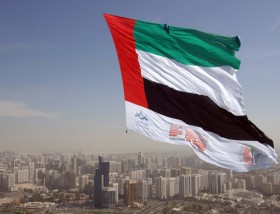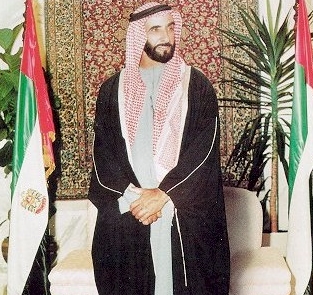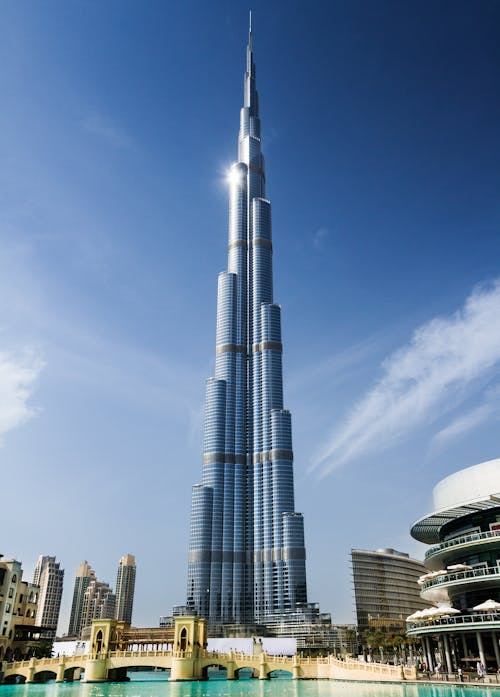History of UAE
Early History
This area was converted to Islam in the 7th century AD for centuries it was embroiled in dynastic disputes. It became known as the Pirate Coast as raiders based there harassed foreign shipping, although both European and Arab navies patrolled the area from the 17th century into the 19th century. Early British expeditions to protect the India trade from raiders at Ras al-Khaimah led to campaigns against that headquarters and other harbors along the coast in 1819 . The next year, a general peace treaty was signed to which all the principal shaikhs of the coast adhered. Raids continued intermittently until 1835 , when the sheikhs agreed not to engage in hostilities at sea. In 1853 , they signed a treaty with the United Kingdom, under which the sheikhs (the "Trucial Sheikhdoms") agreed to a "perpetual maritime truce." It was enforced by the United Kingdom, and disputes among shaikhs were referred to the British for settlement.
1892 Treaty
Primarily in reaction to the ambitions of other European countries, the United Kingdom and the Trucial Sheikhdoms established closer bonds in an 1892 treaty, similar to treaties entered into by the UK with other Persian Gulf principalities. The shaikhs agreed not to dispose of any territory except to the United Kingdom and not to enter into relationships with any foreign government other than the United Kingdom without its consent. In return, the British promised to protect the Trucial Coast from all aggression by sea and to help out in case of land attack.
Border Disputes
In 1955, the United Kingdom sided with Abu Dhabi in the latter's dispute with Saudi Arabia over the Buraimi Oasis and other territory to the south. A 1974 agreement between Abu Dhabi and Saudi Arabia would have settled the Abu Dhabi-Saudi border dispute; however, the agreement has yet to be ratified by the UAE Government and is not recognized by the Saudi Government. The border with Oman also remains officially unsettled, but the two governments agreed to delineate the border in May 1999.
The Trucial States Council
In the early 1960s Dubai was ahead of all the other states even that oil was not yet discovered in its territories. Abu Dhabi was behind until His Highness Shaikh Zayed bin Sultan Al Nahyan became ruler of Abu Dhabi in 1967.
The British had started earlier a development office that helped in some small developments in the Emirates. The shaiks of the Emirates decided then to form a council to coordinate matters between them and took over the development office. They formed the Trucial States Council, and appointed Adi Bitar; Sheikh Rashid bin Saeed Al Maktoum's Legal Advisor as Secretary General and Legal Advisor to the Council. The Council was terminated once the United Arab Emirates was formed
 [edit]
The Formation and Independence of the UAE
[edit]
The Formation and Independence of the UAE
In 1968, the UK announced its decision, reaffirmed in March 1971 , to end the
treaty relationships with the seven Trucial Sheikhdoms which had been, together
with Bahrain and Qatar, under British protection. The nine attempted to form a
union of Arab Emirates, but by mid-1971 they were unable to agree on terms of
union, even though the termination date of the British treaty relationship was
the end of 1971.
Bahrain became independent in August and Qatar in September 1971. When the British-Trucial Shaikhdoms treaty expired on December 1, 1971, they became fully independent.
The Rulers of Abu Dhabi and Dubai decided to form a union between their two Emirates independently, prepare a constitution, then call the Rulers of the other five emirates to a meeting and offer them to join. It was also agreed between both of them that Adi Bitar write the constitution and have it ready by 2 December 1971.
On December 2, 1971, at the Dubai Guesthouse Palace four other Emirates agreed to join and enter into a union of six Emirates called the United Arab Emirates. Ras al-Khaimah joined later, in early 1972.
Regional Role
The UAE became a positive element in the region and had an important role to play in engaging in good relations with all its neighboring countries. The UAE sent forces to liberate Kuwait during the 1990-91 Arabian Gulf War.
 Sheikh
Zayed's Demise
Sheikh
Zayed's Demise
On November 2, 2004, the UAEs first and only president, Sheikh Zayed bin Sultan Al Nahyan, died. His eldest son Khalifa bin Zayed Al Nahyan succeeded him as Ruler of Abu Dhabi. In accordance with the Constitution, the UAEs Supreme Council of Rulers elected Khalifa bin Zayed Al Nahyan as UAE Federal President. Mohammed bin Zayed Al Nahyan succeeded Khalifa as Crown Prince of Abu Dhabi.
| UAE Culture | Sheikh Zayed Mosque Abu Dhabi | Restaurants in Dubai | Dubai Camel Polo | Palm Jumeirah Dubai | Dubai Airport | Khorfakan
Content-type: text/html






